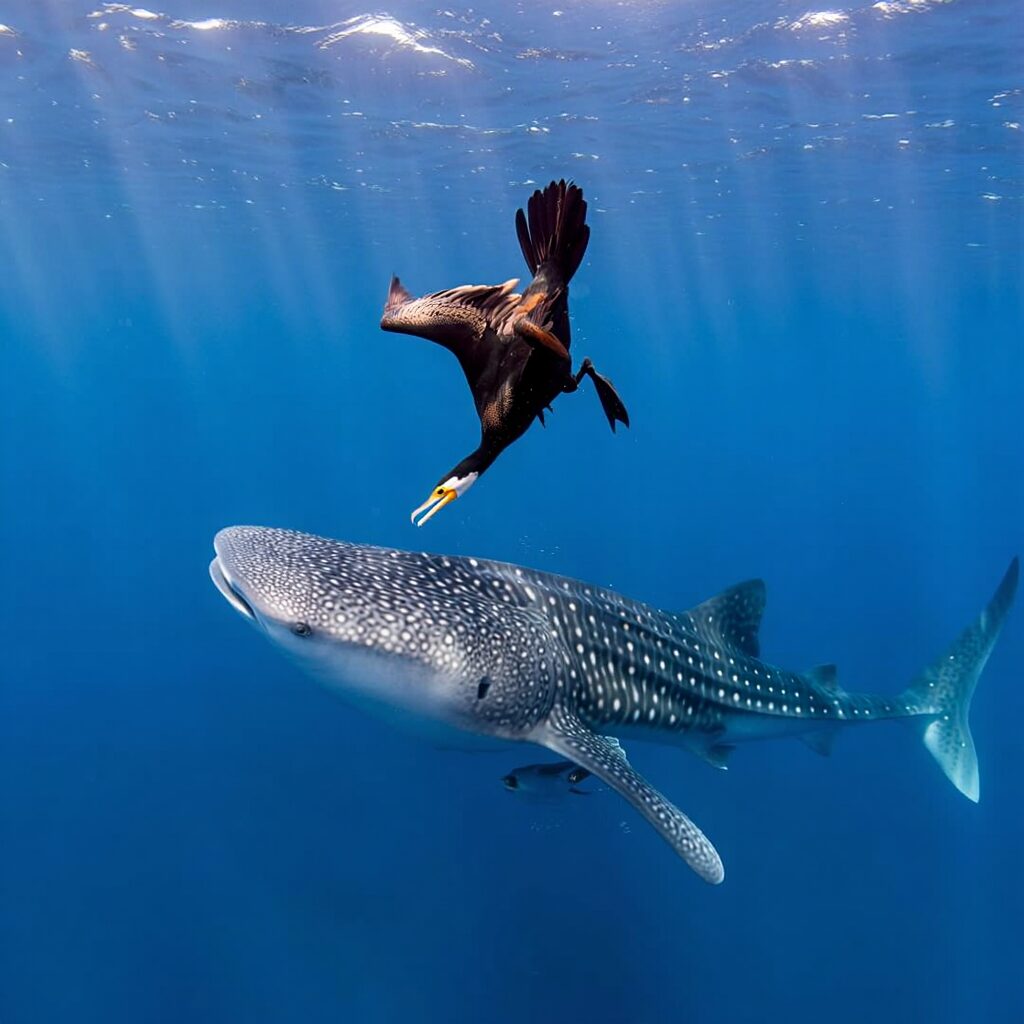In the turquoise waters off Baja California, witnesses held their breath as a lone cormorant hurled itself toward the ocean’s most majestic fish—the whale shark. With wings tucked tight and beak pointed like a spear, it dove straight at the titan’s spotted flank, striking with shocking boldness. To onlookers, it seemed almost unthinkable: a bird daring to attack the largest fish in the sea.
The whale shark flinched and twisted, a shadow of movement rippling across its enormous body. Then, in a flash, the cormorant broke the surface, thrashing wildly. Clenched in its beak was not the shark’s flesh but something smaller, stranger, and fiercely wriggling—an unwanted passenger.
It was a remora.
These notorious hitchhikers fasten themselves to giants with suction-disc heads, living off scraps while adding drag to their unwilling hosts. Often seen as parasites, they are nearly impossible to dislodge. Yet in this moment, the mystery was revealed: the bird wasn’t attacking the whale shark at all—it was targeting the stubborn fish clinging to its side.
For scientists, the encounter was astonishing. Had the cormorant discovered a new hunting strategy, or was this simply opportunism? One thing is certain: beneath the waves, even the largest creatures have their burdens—and sometimes it takes a daring bird to set them free.
